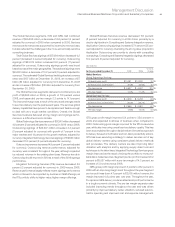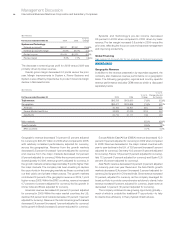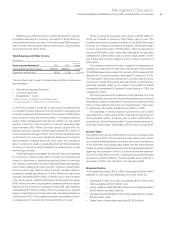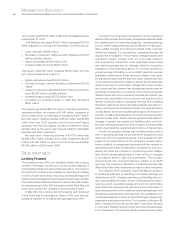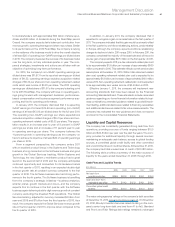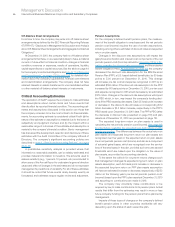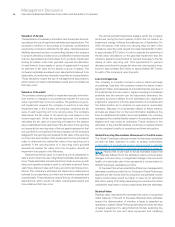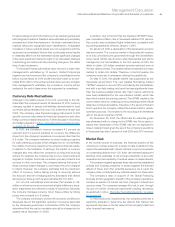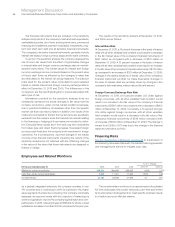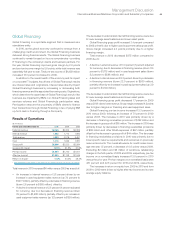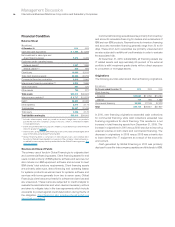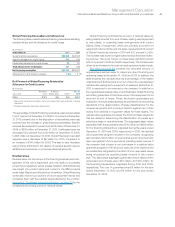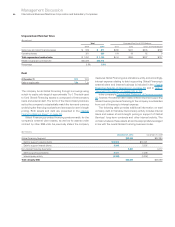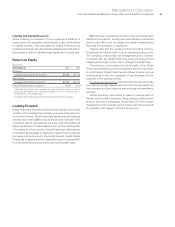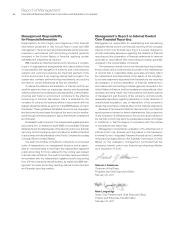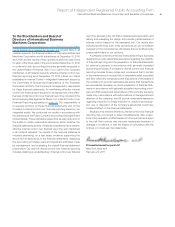IBM 2010 Annual Report Download - page 53
Download and view the complete annual report
Please find page 53 of the 2010 IBM annual report below. You can navigate through the pages in the report by either clicking on the pages listed below, or by using the keyword search tool below to find specific information within the annual report.
51
Management Discussion
International Business Machines Corporation and Subsidiary Companies
Revenue Recognition
Application of the various accounting principles in GAAP related
to the measurement and recognition of revenue requires the
company to make judgments and estimates. Specifically, complex
arrangements with nonstandard terms and conditions may require
significant contract interpretation to determine the appropriate
accounting, including whether the deliverables specified in a
multiple element arrangement should be treated as separate units
of accounting. Other significant judgments include determining
whether IBM or a reseller is acting as the principal in a transaction
and whether separate contracts are considered part of one
arrangement.
Revenue recognition is also impacted by the company’s ability
to estimate sales incentives, expected returns and allowances for
credit losses. The company considers various factors, including
a review of specific transactions, the credit-worthiness of the
customers, historical experience and market and economic condi-
tions when calculating these provisions and allowances. Evaluations
are conducted each quarter to assess the adequacy of the esti-
mates. If these estimates were changed by 10 percent in 2010, net
income would have been impacted by $89 million (excluding Global
Financing receivables reserves discussed on page 57).
Costs to Complete Service Contracts
The company enters into numerous service contracts through its
GTS and GBS businesses. During the contractual period, revenue,
cost and profits may be impacted by estimates of the ultimate
profitability of each contract, especially contracts for which the
company uses the percentage-of-completion (POC) method of
accounting. If at any time these estimates indicate the POC contract
will be unprofitable, the entire estimated loss for the remainder
of the contract is recorded immediately in cost. The company
performs ongoing profitability analyses of its services contracts in
order to determine whether the latest estimates require updating.
Key factors reviewed by the company to estimate the future
costs to complete each contract are future labor costs, future
product costs and expected productivity efficiencies. Contract
loss provisions recorded as a component of other accrued
expenses and liabilities were approximately $23 million and
$37 million at December 31, 2010 and 2009, respectively.
Income Taxes
The company is subject to income taxes in the U.S. and numerous
foreign jurisdictions. Significant judgments are required in deter-
mining the consolidated provision for income taxes.
During the ordinary course of business, there are many trans-
actions and calculations for which the ultimate tax determination
is uncertain. As a result, the company recognizes tax liabilities
based on estimates of whether additional taxes and interest will be
due. These tax liabilities are recognized when, despite the company’s
belief that its tax return positions are supportable, the company
believes that certain positions may not be fully sustained upon
review by tax authorities. The company believes that its accruals
for tax liabilities are adequate for all open audit years based on
its assessment of many factors including past experience and
interpretations of tax law. This assessment relies on estimates and
assumptions and may involve a series of complex judgments about
future events. To the extent that new information becomes available
which causes the company to change its judgment regarding the
adequacy of existing tax liabilities, such changes to tax liabilities
will impact income tax expense in the period in which such deter-
mination is made.
Significant judgment is also required in determining any valuation
allowance recorded against deferred tax assets. In assessing the
need for a valuation allowance, management considers all available
evidence for each jurisdiction including past operating results,
estimates of future taxable income and the feasibility of ongoing
tax planning strategies. In the event that the company changes its
determination as to the amount of deferred tax assets that can be
realized, the company will adjust its valuation allowance with a
corresponding impact to income tax expense in the period in which
such determination is made.
The consolidated provision for income taxes will change period
to period based on non-recurring events, such as the settlement
of income tax audits and changes in tax laws, as well as recurring
factors including the geographic mix of income before taxes, the
timing and amount of foreign dividend repatriation, state and local
taxes and the effects of various global income tax strategies.
To the extent that the provision for income taxes increases/
decreases by 1 percent of income before income taxes, consoli-
dated net income would have decreased/improved by $197 million
in 2010.


